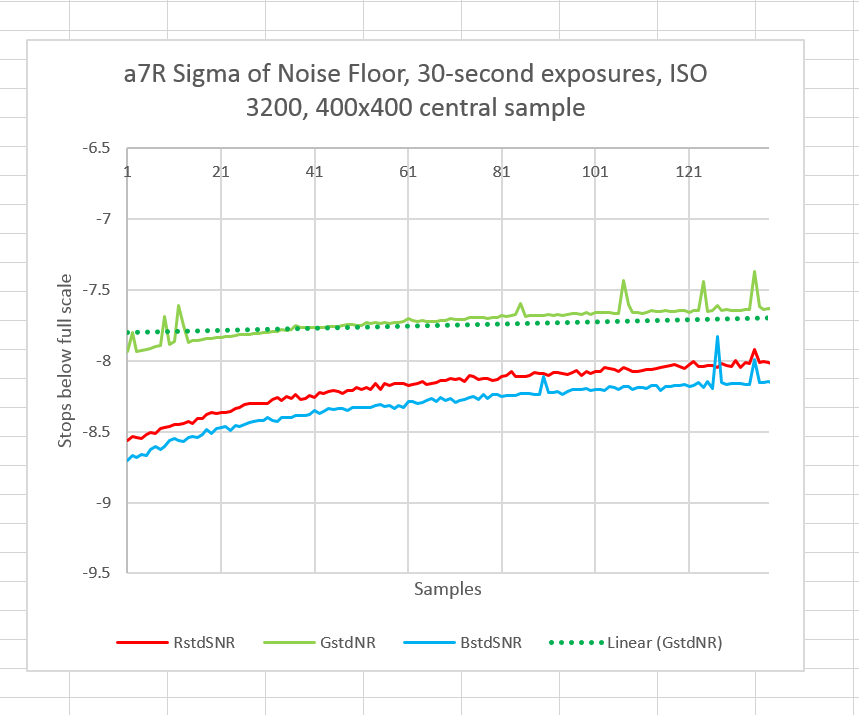In the previous post, we saw a pronounced self heating effect in the dark noise of successive 30-second exposures with the Sony a7RII. I repeated the test with the predecessor camera, the a7R.
I set the camera’s shutter speed to 30 seconds, which is as long as it will go. I set the shutter mode to single shot. I figured that’s the setup you’d probably use for astrophotography. I set the ISO to 3200, which is higher than I’d use myself, but seems to be some kind of astrophotography standard. I hooked the camera to an intervalometer that was set to 1 second, so that would be the greatest time interval between exposures. I turned off lens corrections. I turned off long exposure noise reduction. I stopped the lens down to f/22 and firmly affixed the lens cap. I made 140 exposures.
I measured the standard deviation of a central 400×400 pixel sample:
The vertical axis is the same as for the previous 30-second exposure series with the a7RII. The self-heating effect is much less pronounced.

I think what you are seeing is the kinematic mounts associated with the IBIS system in the A7R2 preclude a good thermal path from the sensor to the camera body. In non IBIS camera the sensor can be hard mounted directly the camera chassis. I think the upcoming A7S2 may lack IBIS for this reason. Cold weather and keeping the back LCD pulled away from the camera body may help with the A7R2. I would think the 1″ stacked sensors in the new Sony RX100 / RX10 would generate more heat and make for a harder thermal design prob.
Cheers
Gary